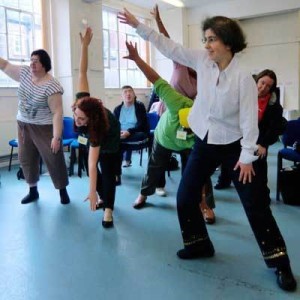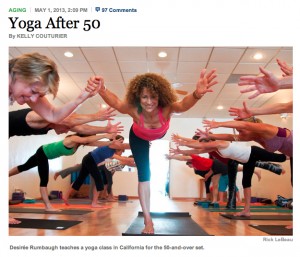When you picture people practicing yoga, do you imagine impossibly supple, young people bent into all sorts of shapes no human should be able to get themselves into?
If so, then you’d be surprised to hear that yoga can be incredibly beneficial for people with mobility issues, including elderly people and those with disabilities. What’s more, yoga can be practiced not just from the comfort of your own home, but even from the comfort of your own chair!

Benefits Of Chair Yoga
Yoga has been shown to improve overall health, prevent and (even in some cases) reverse disease when practiced regularly as a lifestyle. With this in mind, it’s no surprise that it can therefore lend its benefits to those with mobility issues. Here are some of them:
1. Improved Strength
This means that elderly people will be better able to continue with hobbies and daily activities independently for many more years to come. If they are unlucky enough to suffer a fall or injury, a strong body will be able to withstand this better and sustain fewer injuries.
2. Improved Flexibility
Chair yoga can help those with mobility issues to undertake activities that they have perhaps been unable to, such as reaching down to tie shoe laces or pick things up.
3. Improved Proprioception
Proprioception is the skill of knowing where your body is in space, and coordinating your movements accurately. This is particularly important for elderly people and can prevent falls. For people with disabilities or conditions such as MS, it may mean having greater control over your body and its movements.
4. Reduced Stress And Improved Mental Clarity
Chair yoga can lessen the impact of chronic illnesses and pain. For elderly people, it may also help them cope with feelings of isolation, if this is a problem. Being calmer and more relaxed inevitably leads to a greater feeling of happiness and well-being, which everyone can benefit from!
5. Opportunities To Meet People And Socialize
Joining chair yoga classes for those with mobility issues and the elderly will also give them a venue to socialize and make friends. However, it’s important that you choose an appropriate class so that the instructor will have specific knowledge about what is appropriate for you to do—they’ll be able to suitably adapt the exercises.
6. Improved Stress And Pain Management
Chair yoga (and yoga in general, really) includes breath work, which can help people not only with stress management but also for coping and managing pain. Through meditation and paying attention to your breath, you can help your body and mind to cope with the pain of an illness or condition you may suffer with.
Chair Yoga Poses
I have provided some examples of yoga poses and postures below that can be done from the comfort of a chair covering a range of abilities. These postures all promote flexibility and strength.







The great thing with yoga is that it can be adapted to suit anyone’s needs. The aim is to work with your body rather than against it, therefore ruling out any competitiveness, which can lead you to push yourself too far and do yourself harm.
It’s an effective and gentle way to improve your strength and flexibility in a way that can compliment your current medical interventions, therapies and exercises. With a regular practice, you will soon be reaping the benefits that go well beyond the ones outlined above.
Have you tried chair yoga?
*All images are courtesy of the author and Multiyork









